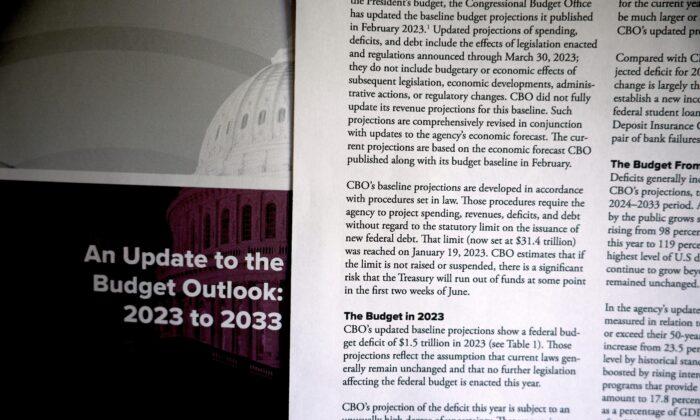The Congressional Budget Office (CBO), in its recently revised report, predicted slower U.S. economic growth and higher unemployment into next year.
The nonpartisan budget agency said on July 26 that economic and job growth in 2024 has so far been stronger than forecasted in February.
However, its updated forecast saw parts of the economy in decline through 2024.
US Economy Doing Better Than Expected, Says CBO
Many economists had expected that the Federal Reserve’s aggressive plan to raise interest rates to combat high inflation would have led to mass layoffs and a recession by now.Instead, the U.S. economy has continued to grow and the labor market remains tight, while hiring is relatively solid.
Real adjusted economic growth for 2023 as a whole is expected to grow to 0.9 percent instead of 0.1 percent as forecast in February due to the stronger-than-expected labor market in the first half of 2023.
The CBO said it expects interest rates to continue to rise, while the gross domestic product (GDP) faces a slowdown in the latter half of the year.
The agency said that the biggest contributors to the strong economic performance in the first half of 2023 were higher-than-expected net exports, government purchases, and housing investments.
“Real GDP is also estimated to have grown by 1.4 percent in the second quarter of 2023, rather than declining by 0.4 percent as CBO projected in February,” said the budget office.
However, consumer spending and labor force participation is expected to decline later this year, as employers need fewer workers while the unemployed have less money to spend.
The CBO projects U.S. GDP growth in the latter half to slow to 0.4 percent, as consumer spending weakens and tighter lending standards reduce economic activity.
Unemployment Rates to See Uptick by Year-End
Unemployment for the rest of 2023 is expected to rise from 3.6 percent to 4.1 percent at the end of this year.This is an improvement from the agency’s earlier prediction that the unemployment rate would jump to 5.1 percent by the end of 2023.
The jobless rate will then hit 4.7 percent by the end of 2024, according to the new projections, before falling slightly to 4.5 percent in 2025.
Meanwhile, the total number of unemployed is projected to jump from 5.9 million in mid-2023 to 7.8 million at the end of 2024, said the budget office.
Inflation Likely to Continue Declining
On a positive note, inflation is expected to decline due to the Fed’s hiking of the interest rates.The central bank on July 26 raised its benchmark policy rate for the eleventh time in 17 months, to a range of 5.25–5.50 percent, its highest level since 2001.
Inflation has since dropped from a record annual pace of 9.1 percent in June of last year to 3 percent in June.
Price growth in the Personal Consumption Expenditures (PCE) index is projected to slow from 3.3 percent in 2023 to 2.6 percent in 2024, before reaching 2.2 percent in 2025.
The CBO said that the slowdown would reflect several factors, such as softening labor markets and lower growth in home prices, including declines in some regions, which normally has an effect on rents.
The federal funds rate is also projected to decline from 5.4 percent in the fourth quarter of 2023 to 4.5 percent in the fourth quarter of 2024 and to 3.6 percent in the fourth quarter of 2025, according to the CBO.
CBO projections are often less optimistic than other forecasters such as the Fed, as the latest report noted that “projections are highly uncertain, and many factors could lead to different outcomes.”
In the meantime, the CBO report did not update federal budget forecast data.





